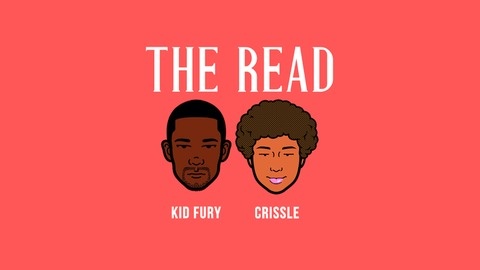Whenever I teach podcasting, I begin with two audio excerpts. The first is from a popular investigative journalism podcast called S-Town, hosted by Brian Reed and legacied into fandom by its predecessors, This American Life and Serial. The second excerpt is from The Read, a lesser-known pop-culture podcast hosted by Kid Fury and Crissle. Before continuing with this essay, give a listen to the first two and half minutes from each podcast: first S-Town, and then The Read.
Following this introduction, I ask my students what differences they hear between the two, and why. I want them to hear how the personas we experience in podcasts, just as on the stage or page, don’t develop by accident. In fact, the role of the host is the single most important factor in determining the success of a show. Remember that projecting a persona is not in any way inconsistent with being ourselves; it’s not like acting. Instead we’re aiming for a consistent version of ourselves that is both comprehensible and entertaining. Soliciting an audience hinges on our choice of personality, especially in those first few minutes of an episode when listeners decide whether or not they belong to this sonic scene.
In my classroom—a private liberal arts college in Colorado-sixteen white faces stare back at me. These are savvy students, perfectionists eager to please by pointing out differences in energy level, sense of humor, sense of outrageousness, pacing, and vocabulary. Not a single student addresses appeals to gender, race, class, and sexual orientation.
Can they not hear it, the difference between the two excerpts? In playing themselves, are my white, upper class students deaf to S-Town‘s call of camaraderie? That clean sound, educated white male, dispensed with ease so as to not overwhelm listeners, not to crowd them like The Read, with its noisy defiance, that acoustic middle finger to podcast’s straight white norm. Perhaps it’s just indelicate to address Otherness in podcasting, even now, even in the face of fascism, when it’s a writer’s responsibility to push back with a public voice.
Otherness has always existed on air, from radio play to audio journalism, podcast to documentary. Public media pointedly accommodates whiteness. Producers of color, audiences of color, we’re largely excluded from that collective public, sequestered to the margins to air out our stories on private frequencies.
A quick Google search for “POC podcasts” culls brief lists of low-fi comedy duos like the pop culture podcast Black Girls Talking, or else progressive platforms for those with intersectional identities, such as the political podcast #GoodMuslimBadMuslim. One list promises “life beyond Ira Glass,” the This American Life icon whose nasally, white male narration is alarmingly ubiquitous and synonymous with on-air storytelling. Aside from media darlings Latino USA, Two Dope Queens, and Snap Judgement, the majority of POC podcasts sound marginalized, by which I mean they forsake the funding, equipment, and/or desire to project crisp, professional sound.

 I tell my students that audio artists communicate with one person at a time. As good radio hosts, we think of ourselves as talking on the phone to someone we feel close to, someone whose intelligence we respect. There’s an intimacy there, a vulnerability, voice to voice, exposed. Radio tells stories through sound, and few sounds affect us more than the human voice. Audiences can hear for themselves that a politician is dismissive or a protester is angry; they don’t need a narrator to summarize in sound bites. And the right sound-the whine of air raid siren or the echoes in an abandoned building-can be equally evocative, substituting for hundreds of words.
I tell my students that audio artists communicate with one person at a time. As good radio hosts, we think of ourselves as talking on the phone to someone we feel close to, someone whose intelligence we respect. There’s an intimacy there, a vulnerability, voice to voice, exposed. Radio tells stories through sound, and few sounds affect us more than the human voice. Audiences can hear for themselves that a politician is dismissive or a protester is angry; they don’t need a narrator to summarize in sound bites. And the right sound-the whine of air raid siren or the echoes in an abandoned building-can be equally evocative, substituting for hundreds of words.
I know producers, including myself, who’ll go to no end to capture that perfect, dynamic sound-a click, a roar, a wheeze, a laugh-all in the name of getting good tape. Too often we forget that diverse vocal styles communicate important dimensions of human experience. And while there’s no single way of speaking authentically as an ethnic individual, different perspectives encode our narrative with cultural context.
Why deny that compelling continuum and opt instead for the vapid sound of broadcast-worthy whiteness, the blank canvas to audio art? Because we are trained to perceive the sound of whiteness as neutral, normal, even comfortable. Accented English, code switching, vivacity and volume, are simply too much strain. In his essay “Vocal Color in Public Radio,” producer Chenjerai Kumanyika confesses that when he made his first radio story, he imagined someone else’s voice reading his script-someone white. “In my mind’s ear,” he writes, “it was harder to hear my voice, that is to say my type of voice, as the narrator of a nonfiction radio piece.”
The limitation of radio is actually its greatest strength: there are no visuals. Radio forces us to be creative, to pay attention to voice, sound, and language. We’re not just journalists, eliciting the stories of others, we’re also dynamic hosts and razor-sharp editors. We make you hear what we want you to hear.
To be a producer of color is to painstakingly craft our persona: Do we choose to perform race, amplifying the energy and code switching into high gear? If we don’t sound like a Latina, do we compensate by writing like a Latina? Or do we embed cultural clues into an otherwise neutral script? If we choose to sound “white,” do we use our podcast to platform people of color, thus lending to our cultural authenticity? Perhaps we should go out of our way to locate a non-white guest expert or pass up a story that stereotypes an entire ethnicity. Or do we reject identity politics altogether, and just make the art that we want to make? Are we Brian from S-Town, or Kid Fury and Crissle from The Read?
We must choose. We are always choosing.
 FELICIA ROSE CHAVEZ is a digital storyteller whose work features regularly on National Public Radio. She holds an M.F.A. in creative nonfiction from the University of Iowa. Former Program Director to Young Chicago Authors and founder of GirlSpeak, a literary webzine for young women, Felicia teaches creative writing and new media as a Riley Scholar-in-Residence at Colorado College.
FELICIA ROSE CHAVEZ is a digital storyteller whose work features regularly on National Public Radio. She holds an M.F.A. in creative nonfiction from the University of Iowa. Former Program Director to Young Chicago Authors and founder of GirlSpeak, a literary webzine for young women, Felicia teaches creative writing and new media as a Riley Scholar-in-Residence at Colorado College.


